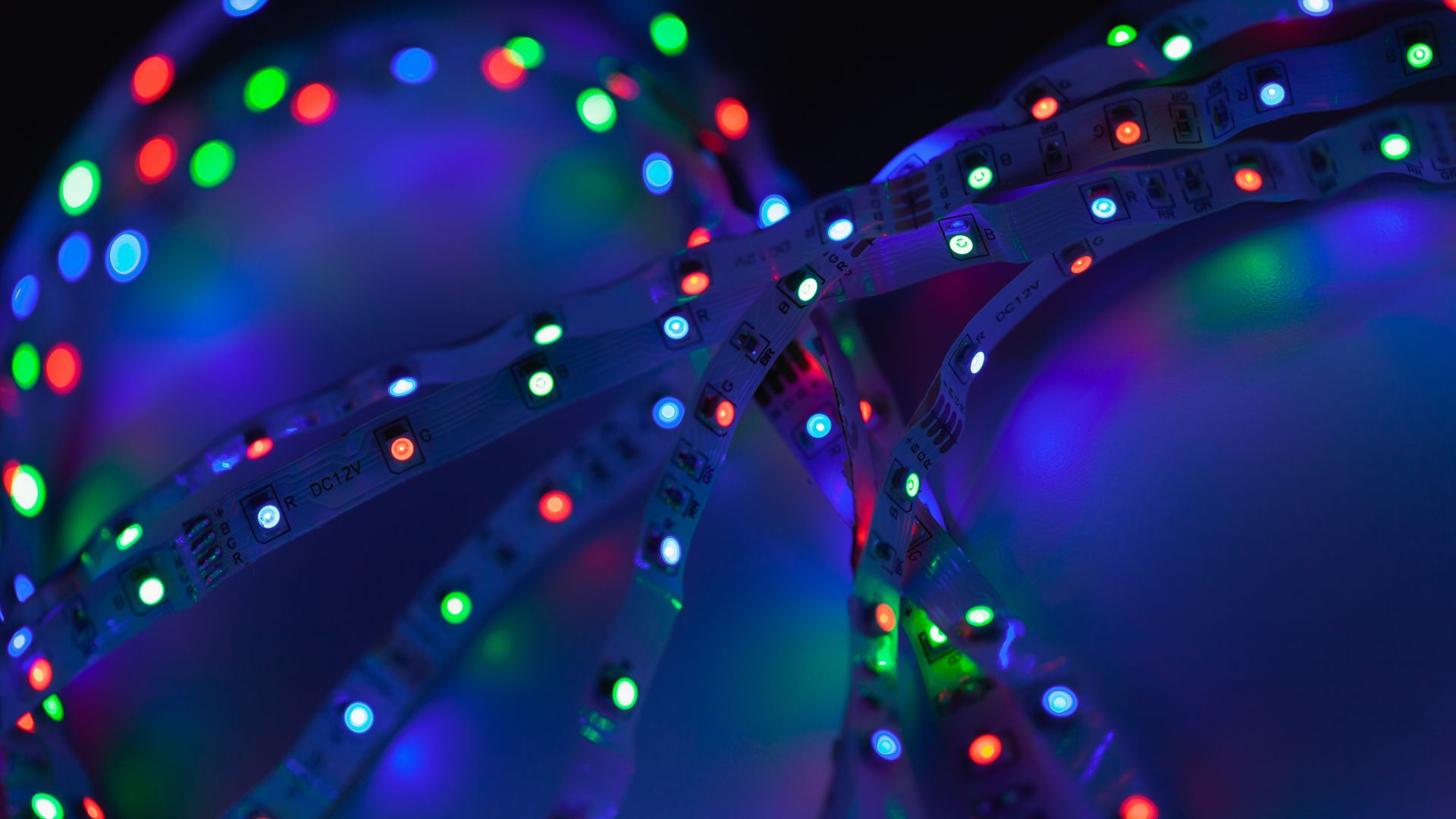How to Light Up Your Outdoor Space with LED Strip Lights

As the days get shorter and the nights get longer, it’s important to make sure your outdoor space is well-lit with outdoor led strip lights. Not only does proper lighting provide a safer environment, but it can also help you extend the use of your outdoor space into the evening hours. LED strip lights are a great option for outdoor lighting because they’re relatively inexpensive, easy to install, and low maintenance. In this blog post, we’ll discuss the benefits of LED strip lights for outdoor spaces, share some ideas for how to use them, and walk you through the process of installing them.
Benefits of LED Strip Lights for Outdoor Spaces.
LED lighting is becoming increasingly popular for both indoor and outdoor use due to the many advantages it offers over traditional incandescent bulbs. LEDs are more energy-efficient, longer-lasting, and better for the environment.
The main advantage of LED lights is that they consume far less energy than traditional incandescent bulbs. LEDs use a fraction of the power of incandescent bulbs, which means they can significantly reduce your energy bill. They also have a much longer lifespan than incandescent bulbs, with some models lasting up to 50,000 hours. This means you won’t have to replace your bulbs as frequently, saving you money and reducing waste.
In addition to being more energy-efficient, LEDs are also better for the environment. Since they don’t contain harmful chemicals like mercury, they can be safely disposed of without harming the planet. And since they use less power, they generate less greenhouse gas emissions from power plants.
Understanding What LED Strip Lights Can Do.
Now that we’ve covered the basics of LED lighting, let’s take a look at what LED strip lights can do for your outdoor space. Led strip lights are long strips of small LED bulbs that can be used for a variety of purposes. They’re commonly used for accent lighting, task lighting, or decorative lighting applications.
Accent lighting is a great way to use LED strip lights. You can use them to draw attention to specific features in your landscape or architecture. If you have an interesting tree in your yard, for example, you could wrap the trunk in an LED strip light to make it stand out at night. If you have a lovely stonework patio, you could outline it with LEDs to create a soft glow.
Another great way to use LED strip lights is for task lighting applications such as providing light for a BBQ area or outdoor kitchen countertop. The strip lights can be mounted under the counter or cabinets to provide task lighting that is both functional and aesthetically pleasing.
And finally, LED strip lights can also be used for decorative purposes such as creating festive holiday displays or accenting your outdoor living space with a soft, ambient glow.
Ideas for Using LED Strip Lights Outside.
One of the most popular ways to use LED strip lights is for outdoor accent lighting. This type of lighting is used to highlight specific features or architectural details of your home or landscape. It can also be used to create a warm and inviting ambiance in your outdoor living space.
There are many different ways to use accent lighting. You can install strip lights under the eaves of your home to highlight the architecture. You can also use them to accentuate landscaping features like gardens, fountains, or trees. If you have a deck or patio, you can use accent lighting to create a cozy and inviting atmosphere for entertaining or relaxing.
Outdoor Pathway Lighting.
Another popular way to use LED strip lights is for outdoor pathway lighting. This type of lighting is used to illuminate walkways, stairs, and other areas where people need safe and reliable illumination. Pathway lighting is an important safety feature that can help prevent accidents and falls. It can also add beauty and style to your outdoor living space.
There are many different ways to use pathway lighting. You can install strip lights along the edges of sidewalks and walkways. You can also use them to light up stairs or other areas where people may need extra light for safety purposes. In addition, pathway lighting can be used to highlight special features in your landscaping like gardens or ponds.
Outdoor Deck & Patio Lighting.
LED strip lights can also be used on outdoor decks and patios. This type of lighting is ideal for creating a welcoming atmosphere for entertaining or simply relaxing outside. Strip lights can be used in a variety of ways on your deck or patio, making it simple to find a style that suits your needs.
Installing LED strip lights under handrails, around the perimeter, or even underneath furniture are some ideas for using them on decks and patios. Stringing them overhead between posts or beams is another popular option. Whatever method you choose, LED strip lights are an excellent way to add extra light – and style – to your outdoor living space.
Installing LED Strip Lights.
Before installing your LED strip lights, it’s important to do some planning and preparation. First, determine where you want to place the strips and what kind of effect you’re trying to achieve. Will the lights be used for accent lighting, pathway lighting, or deck and patio lighting? Once you know where the lights will go, measure the area so you can buy the correct amount of strip light material.
Next, consider how you will power the lights. LED strip lights run on low-voltage DC power, so you’ll need a compatible power supply. If your project is large or complex, you may need more than one power supply. You’ll also need to connect the strip lights to the power supply using low-voltage DC cable. Be sure to use cable that is rated for outdoor use if your project will be exposed to weather conditions.
Power & Connectors.
Powering your LED strip lights is simple with the right supplies. Start by choosing a low-voltage DC power supply that is compatible with your LEDs. If you are unsure which one to choose, consult an expert or the manufacturer of your LEDs. Most importantly, make sure that the voltage of the power supply matches the voltage rating of your LEDs. For example, if you have 12V LEDs, you’ll need a 12V power supply. Once you have a compatible power supply, connect it to your LEDs using low-voltage DC cable. Be sure to use cable that is rated for outdoor use if necessary.
Mounting & Positioning.
After you’ve connected your LEDs to a power source, it’s time to mount and position them outside. It’s important to note that water and moisture can damage LED strips, so keep them away from any water sources like fountains or pools. When mounting them, make sure to leave enough slack in the cables so that they can move freely without being overly stretched.
Zip ties, double-sided tape, or adhesive clips can be used to keep them in place. Finally, arrange them so that they have the desired effect. If you’re using them for accent lighting, point them at architectural features or landscaping elements you want to highlight. If you’re going to use them for pathway lighting, direct them downwards toward walkways or steps. If you’re using them for deck or patio lighting, aim them upwards toward railings or overhead structures.
Maintenance & Troubleshooting.
LED strip lights are built to last and are resistant to the elements, but there are a few things you can do to extend their life and protect them from the elements. To begin, if possible, keep your LED strips in a cool, dry place when not in use. This will help to prevent heat and moisture damage. Second, before cleaning or servicing your LED strips, always disconnect and turn them off. Third, when cleaning your LEDs, use only mild soap and water or a dedicated LED strip light cleaning solution; never use harsh chemicals or abrasive materials. Finally, if you plan to use your LED strips outside, seal any exposed connections with waterproof tape or silicone sealant to prevent moisture damage.
Troubleshooting Common Issues.
There are a few things you can try before calling customer service if your LED strip lights stop working properly. First, ensure that all connections are tight and secure. Next, make sure the power supply is properly plugged in and operational. If the problem persists, try unplugging the LED controller for 30 seconds and then plugging it back in. If none of these suggestions work, please contact our customer service department.
Conclusion
LED strip lights are an excellent choice for adding an additional light and style to your outdoor space. They have several advantages over standard incandescent bulbs, including lower energy consumption, a longer lifespan, and improved safety. LED strip lights can be used in a variety of ways outside, from accent lighting to pathway lighting. Installing them is also relatively simple with a little planning and preparation. Just make sure to weatherproof and protect your lights, as well as troubleshoot any common issues that may arise.
